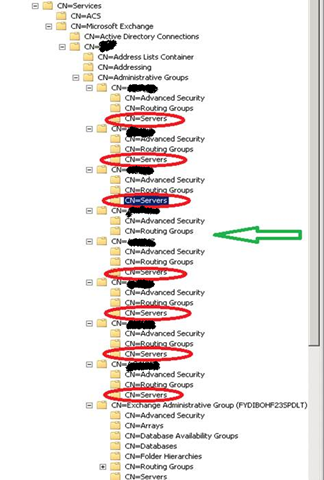The Exchange Team posted a blog entry asking for feedback on how we use public folders. Nice to see they are taking an interest again. The past 4 years the mantra was “move away from them”, “do it now while you still have the time”, etc. SharePoint was always put forwards as number one replacement option. For some scenarios this is indeed a good choice but let’s face it, for some public folder uses there is no decent replacement and that hurts us as they haven’t seen any decent improvements in the last 2 Exchange releases. I know public folders have always been a bit problematic and finicky for us administrators. They tend to need a bit of voodoo and patience to trouble shoot and get running smoothly (see blog post by me for an example of this). But instead of using that of an excuse to get rid of them they could also choose to invest in making them as reliable and robust as mail databases. Giving them the same high availability features might also be a welcome improvement, especially now with DAGs in Exchange 2010.
Especially in the Exchange 2007 era Microsoft was promoting getting rid of them actively. But they are still around because so many people use them and they have not decent alternative for all scenarios. In that respect they do listen to their customers. But we want improvements. Some of the functionality we need is there but we really need more robust, reliable and high available public folders. As as shared mail instrument for both sending and receiving mail in a team public folders beat shared mailboxes and SharePoint any time. It also shines for maintaining a shared repository of contacts. I’m not a proponent of using public folder for a document repository but I understand that its relative simple usage and data protection via replicas still sounds attractive to some versus the complexity of SharePoint. Sure SharePoint has more to offer but perhaps they don’t need those capabilities and to make matters even less attractive; it’s quite an effort to migrate from public folders to SharePoint.
So that left us public folders users feeling a bit abandoned with a message of get out but no easy path to go anywhere else that serves all our needs. So until today all my customers are still and want to keep using public folders. They are a worried however that one day they will be left out in the cold. But perhaps there is a better future on the horizon for public folders. They are asking us to “Help us learn more about how you use public folders today!” in that blog post. The emphasis is on “usage scenarios, folder management habits or thought process around public folder data organization”. So if you need and use public folders in any way and you’d like for them to get more attention and evolve into more robust and functional instruments give Microsoft your feedback. Exchange 2010 has brought us great features & very affordable high availability together with support for virtualization. Now we either need a better alternative to public folders than the ones we got now or (my preference) we need better public folders. Since consumption of public folders occurs mostly in Outlook I would suggest the latter. And while we’re asking, bring back access to folder shares in OWA ![]() .
.





